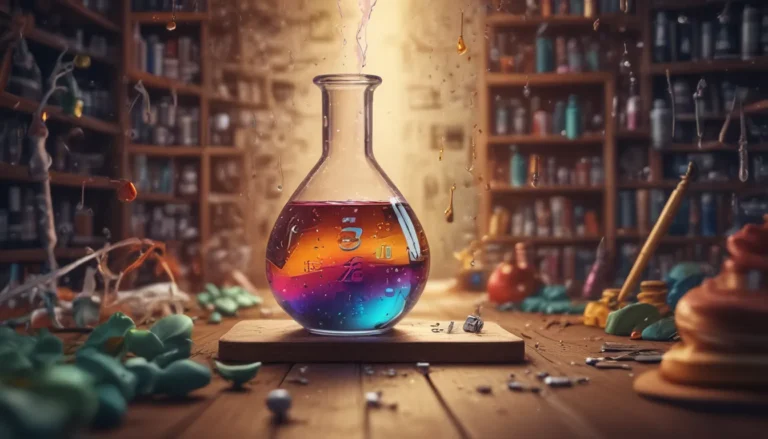A Note About Images: The images used in our articles are for illustration purposes only and may not exactly match the content. They are meant to engage readers, but the text should be relied upon for accurate information.
Welcome to the fascinating realm of Schottky defects, a captivating concept in solid-state chemistry that has captivated researchers and scientists for years. Named after the renowned physicist Walter H. Schottky, this type of point defect in crystalline materials offers unique insights into material properties, conductivity, stability, and much more. Join us on an enlightening journey as we uncover 19 intriguing facts about Schottky defects, exploring their formation, impact, and applications across various fields.
Understanding Schottky Defects
- Schottky defects are vacancies in crystal structures that influence material properties like conductivity and stability, essential for designing semiconductor devices and energy storage systems.
- Scientists study Schottky defects to enhance material properties, develop new materials, and improve energy conversion in solid oxide fuel cells and other technologies.
The Discovery and Formation of Schottky Defects
- The Schottky defect, first observed by Walter H. Schottky in the early 1900s, arises in ionic compounds due to vacancies in lattice structures.
- These defects are formed during crystal growth when ions fail to occupy their designated positions, resulting in vacant sites that impact the crystal’s density.
Significance in Solid State Chemistry
- Schottky defects offer valuable insights into the behavior and properties of ionic materials, affecting conductivity, stability, and other characteristics.
Influence on Material Properties
- Schottky defects can alter material properties, including optical and magnetic properties, by creating localized states within the material.
- Engineers utilize these defects in semiconductor devices to modify electrical properties effectively.
Temperature Dependence and Point Defect Classification
- Schottky defects exhibit temperature-dependent behavior, with defect concentrations rising as temperature increases due to enhanced atomic mobility.
- Classified as point defects, Schottky defects are atomic or ionic irregularities that include vacancies, interstitials, and Frenkel defects.
Impact on Ionic Migration and Crystal Stability
- Schottky defects enhance the ionic migration capabilities of materials, influencing ionic conductivity and crystal stability.
- These defects can lower a crystal’s energy, making it more susceptible to structural changes.
Application in Energy Storage and Material Science
- Schottky defects play a critical role in energy storage devices like batteries and fuel cells by affecting ion transport and device performance.
- Ongoing research in material science explores Schottky defects to develop new materials with enhanced properties.
Influence on Crystal Cleavage and Defect Engineering
- Schottky defects influence the ease of crystal cleavage, weakening the crystal structure and making it more prone to fracture.
- Intentionally engineered Schottky defects can enhance material properties through defect engineering processes.
Relationship with Stoichiometry and Interaction with Other Defects
- Schottky defects disrupt the ideal stoichiometric composition of materials by creating vacancies, impacting material properties.
- These defects can interact with other crystal lattice defects, such as interstitials or Frenkel defects, affecting material behavior.
Role in Solid Oxide Fuel Cells and Catalysis
- Schottky defects are crucial for solid oxide fuel cells’ efficient operation, facilitating ion movement and energy conversion.
- In catalytic processes, these defects promote surface reactions and enhance catalytic performance.
Conclusion
In conclusion, Schottky defects are a captivating phenomenon in solid-state chemistry that significantly influences material properties and behavior. By exploring the intriguing facts about Schottky defects, researchers and students can gain a deeper understanding of crystal defects and their applications in various fields.
FAQs
Q: What is a Schottky defect?
A: A Schottky defect is a crystal defect characterized by the absence of oppositely charged ions in their regular lattice positions.
Q: What causes Schottky defects?
A: Schottky defects arise from vacancies in crystal structures, resulting from factors like thermal energy or impurities in the crystal.
Q: What are the effects of Schottky defects on material properties?
A: Schottky defects can impact material properties like electrical, ionic conductivity, and optical properties by altering energy band structures.
Q: How are Schottky defects detected?
A: Various experimental techniques like X-ray diffraction and electron microscopy are used to detect and study Schottky defects.
Q: What are some practical applications of Schottky defects?
A: Schottky defects find applications in solid-state devices, catalysts, ceramic materials, and fuel cells due to their influence on material properties.
Before you go, remember that Schottky defects hold the key to unlocking a deeper understanding of material properties and behavior. Dive into the world of crystal defects and discover the remarkable impact of Schottky defects on a wide range of applications in science and technology.






